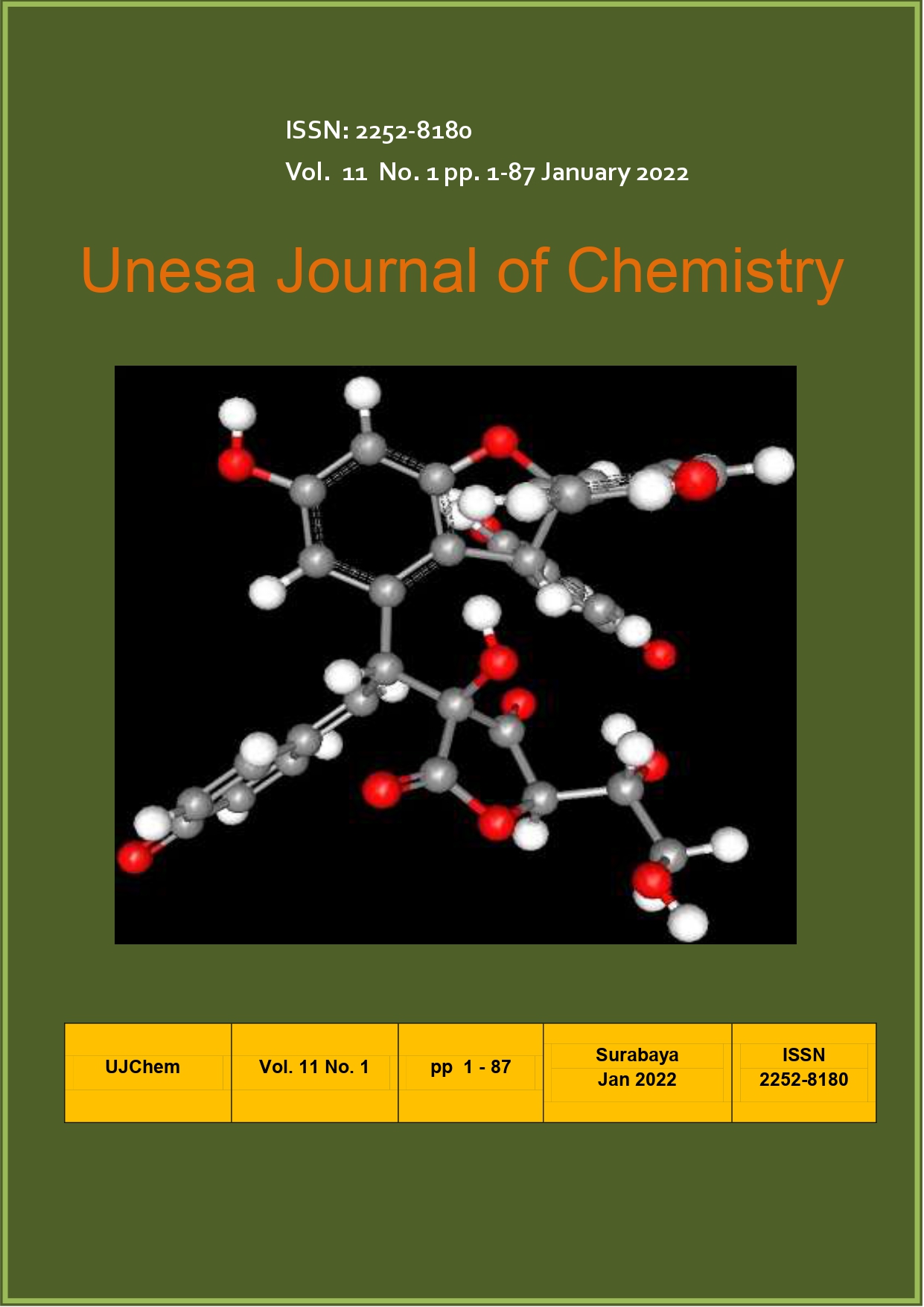Preparation and Characterization of Chitosan-ZnO as Hydrophobic Agent in Cotton Fabric
Main Article Content
Downloads
Download data is not yet available.
Article Details
How to Cite
Maharani, D. K., & Fadhila, K. N. (2022). Preparation and Characterization of Chitosan-ZnO as Hydrophobic Agent in Cotton Fabric. Unesa Journal of Chemistry, 11(1), 69–76. https://doi.org/10.26740/ujc.v11n1.p69-76
Issue
Section
Articles

